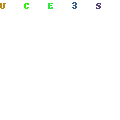Transiting babies from breast milk to formula is inevitable at a some time. Are you a single mom who has to earn to make a living? Or, unfortunately, developed a breast disease? We pray that may never happen with any woman, but it can happen sadly.
There are many other situations like above in which you’d want to transit your baby from breast milk to formula. Since the shifting becomes essential at a specific time, we decided to share a guide on “how to transition from breastmilk to formula.”
The most common and primary thing you should know that every baby reacts differently to the transition process. The point to be noted is that you’ll have to figure out how your baby is reacting. You should not shift your baby on a formula altogether; the process should be done gradually.
Usually moms have their reason to transit their babies to a formula, most common of them are:
- A deficient supply of milk.
- Waking up many times at midnight to feed.
- Some babies can’t suck enough milk.
- The self-desire of moms
However, different women have different reasons for shifting. Let’s stop making you bored any further and dive into the point; the transition from breastmilk to formula – Guide.
- Don’t forget to take advice from a pediatrician
Before making any significant changes regarding your baby, you ought to consult an expert. Having a pediatrician’s instructions is recommended.
The doctor will be helpful while selecting a proper substitute formula for your baby.
They’ll suggest a proper repetition timing and duration for your baby when switching to formula.
- Breast milk in a bottle
Babies may not easily give up their favorite meal, so it’s better to put mother’s milk in the bottle. Babies can react to the taste of milk they’re being fed up.
After adapting to the bottle nipple, it’ll be a lot easier to replace mother milk with a formula.
Make sure to use recommended bottles like made of tempered glass.
- Never go hard
Be gentle and steady when introducing formula to your baby for the first time. Let him have a bit of taste, do note for an irregular reaction like a disturbed tummy.
Whereas, you can change your little angel’s diet all at once if there are no any kind of problems.
- Changing feeding gradually and morning meal
For the least issues when transitioning, you should add formula only a single time in feeding sessions. Make things in a way that your baby doesn’t feel any change.
Though, we’d like to advise that continue breastfeeding passively until your baby is weaned off the breast milk.
To talk about formula time, daytime is best when the baby is more conscious and alert. Your little one may not like to get up from a soothing sleep at night.
- Perfect time for formula
As you may know, babies, when hungry, can eat almost anything you give them. So, when your baby is hungry, that’s the perfect time for formula.
Mixing pumped breast milk with formula to make a good taste and baby’s pleasant smell is the best tip we can give you.
Let’s remind our readers that this guide is most suitable for switching from breastmilk to formula at six months’ baby.
When to stop breastfeeding
Keeping in mind that weaning off breastfeeding is a personal decision. Though, there’s some technical info I would like to share. American academy of pediatrics (AAP) suggests keeping your baby on breast milk for almost a year.
It doesn’t mean at all that breast milk is not beneficial for more than a year. World health organization and UNICEF recommend breastfeeding for up to 2 years.
The two different perspectives regarding breastfeeding, which are officials, have left mothers confused. This knowledge contributes to learning “transition from breastmilk to formula.”
Generally speaking, when a baby is about to become two years old, he gets more cognitive. It eventually may create problems when weaning off breast milk at the age of 2 years? Therefore you should plan for the weaning bit early.
Don’t worry if you’re experience difficulty, and your baby is about to get two years old. There’s always a way out!
We have concluded some of the tips for guide you short as following:
- Replace one feeding session
- Apply formula when the baby is quite hungry
- Do add some water for the baby’s adapting to water as well.
The proper way to wean a baby from breastfeeding
As already mentioned, weaning should be gradual. It could take weeks and even months. Sudden withdrawn can only be considered in extreme circumstances.
Substitute a single feeding session with other suitable meals. Let your baby adapt to the first single, and then apply the same to further sessions. The substituting rate depends on the baby’s reaction to the change, though let it be steady.
Feed your baby when he’s hungry, have your spouse ready to give a shift of bottle or formula feeding. In this way, you’ll be able to take some rest.
Follow signs of baby, that’ll help you to know when the baby wants to be fed. Holding and cuddling the baby would also be beneficial. This closeness between mother and baby is a natural remedy to calm the baby if he gets irritated from formula milk.
The best formula for babies
Every parent wants to give their baby the best ingredients based formula milk. It doesn’t matter if the baby is partially or entirely feeding on formula; you’d always want to give him the best.
When your baby is more than a year old, you should have him adapt to solid meals as well. Early morning, bedtime, and after snacks are some good times for breastfeeding.
It becomes tough to choose from several options available in the market. Let’s tell you what it is, and why it’s necessary to choose the right and best formula for ten months old or higher.
Some types of formula milk
Formula milk also contains nutrients such as fats, carbohydrates, sodium, vitamins, minerals, and water.
Whereas the basics of making these all formulas are roughly the same, there are some significant differences.
- Milk-based formula:
Babies under 12 months of age are not supposed to drink cow’s milk. Therefore, this formula is made explicitly for significantly younger babies. American academy of pediatrics (AAP) says up to 80 percent of formulas available in the market are made up of cow’s milk basics. Hence, choosing the correct one is indeed a necessity.
- Hydrolyzed formula:
This formula is mainly made up of broken amino acids so the baby can digest it easily. However, this type is only suggested by pediatrics in allergy-prone situations. Not to forget, it’s much expensive than others. This could be a contribution to stopping breastfeeding at 6 months.
- Organic formula:
These formulas are sweetened for better taste, but it could lead to teeth decay problems. Organic baby formula is often based on a milk basis and produced without growth hormones, pesticides, and antibiotics, which is a positive point.
- Soy-based formula:
Soy-based formula is made up of soybeans and supplemented with vitamins. Though, experts suggest giving this type in only a situation when the baby doesn’t like to take galactose.
- Baby’s special formula:
The special formula is only given to those who have special needs. Babies born with low weight and allergic to lactose are advised to take this one.
When going for the shopping of formula, you may notice these are sold in different forms. Some will be in powder form and other in liquid concentrate.
The powder form requires the self-effort of mixing of powder and adding liquid as well. On the other hand, the liquid one only requires some water to be added, there you go! The transition from breastmilk to formula requires some serious efforts, too.
To conclude the shopping method, consult from your baby’s pediatrician. He’ll let you know the proper choice. Look for specific formula if your baby is prone to some formula material that you might avoid buying.
Finally
The transition from breastmilk to formula is a necessary step. Moms need to follow proper guidelines for weaning their babies. Looking at a particular formula should be dependent on the baby’s reaction to specific formulas.
Different ages need different minerals with varying kinds of milk of formula. Some babies prone to allergies need to be taken OK care of. Weaning a baby should be breast milk done gradually. Always consult a pediatrician when adapting to a powder milk formula. Following proper rules and methods, weaning could be enjoyable.




